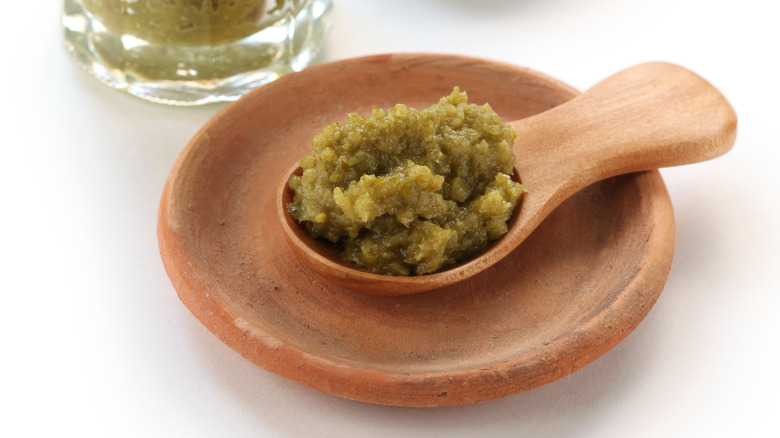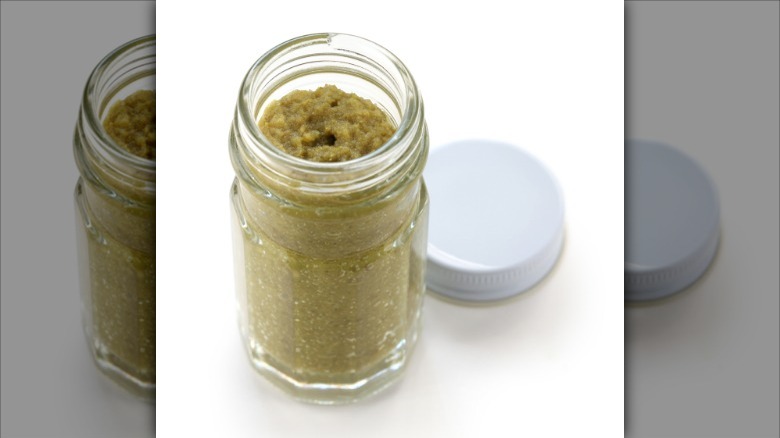How To Make Yuzu Kosho Pasta Sauce Like A Pro
If you have never thought to add yuzu kosho to your ramen or use it in pasta sauce, this may be because you've yet to hear of the stuff, though of course, this expensive ingredient has long been on the radar of chefs like G. Garvin. Well, you may now consider yourself in the know because we are not just going to explain what the stuff is — a Japanese condiment that, as the name implies, is yuzu-based. We're also going to give you some tips for making your own DIY version to use in the pasta sauce of your choice, tips that come straight from Namiko Hirasawa Chen (Nami) of the Japanese recipe blog Just One Cookbook.
As Nami tells Mashed, yuzu kosho consists of nothing more than yuzu zest (either green or yellow) combined with red or green chiles and salt. This makes for a flavor that is spicy, tangy, and, well, salty all at the same time. "I recommend adding a little bit of freshly squeezed juice to make it meld better," she tells us, but goes on to caution: "Adding too much moisture does not preserve well, so use as little as possible." She also notes that if you have difficulty finding fresh yuzu, another citrus fruit such as grapefruit, mandarin, Meyer lemon, lime, or orange can be used in its place. As for the chiles, she says jalapeños will work, although serranos or habaneros could be used if you want your yuzu kosho for an extra-spicy pasta sauce.
Caution is required when making or using yuzu kosho
The first step in making your own yuzu kosho will involve zesting the yuzu, but Namiko Hirasawa Chen says to make sure that you're only shaving off the green or yellow part and don't include any of the white stuff underneath. "The pith," she explains, "tastes bitter," which is also true of other citrus fruits like lemons, as anyone who's ever made the mistake of adding it to their lemonade will know. Nami also recommends wearing gloves when you're de-seeding the chile peppers. She does say that these seeds are usually omitted from store-bought versions of the Japanese condiment, although she allows, "If you like it spicier, you can also include seeds."
The main precaution you'll need to take when adding yuzu kosho to pasta sauce is to use a light hand. As Nami says of the stuff, "A little goes a long way!" She says that you should just add a small amount to start with since you can always add more if needed, but you can't take it out once it's in there. As to what type of pasta sauce you should spike with your yuzu kosho, it would add some much-needed flavor to a bland Alfredo, but could also give an intriguing zing to marinara or bolognese.

